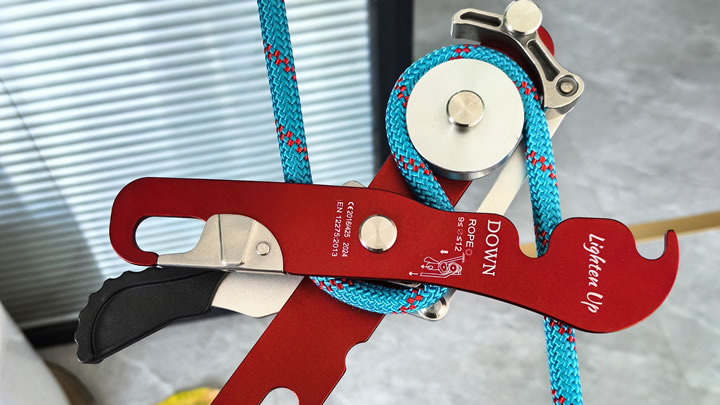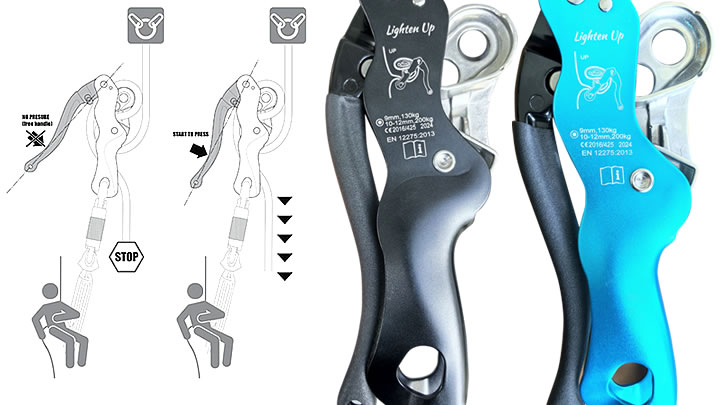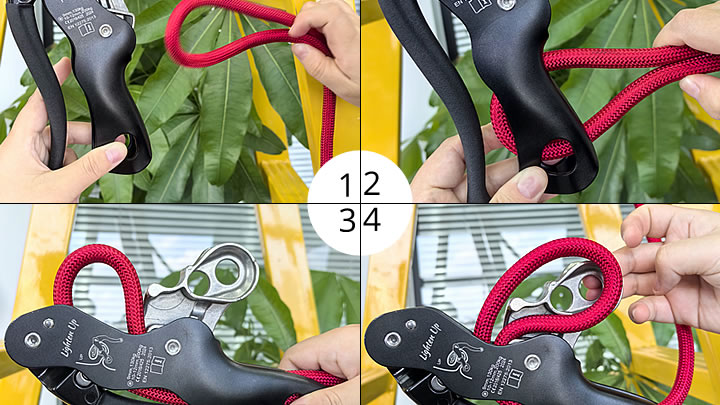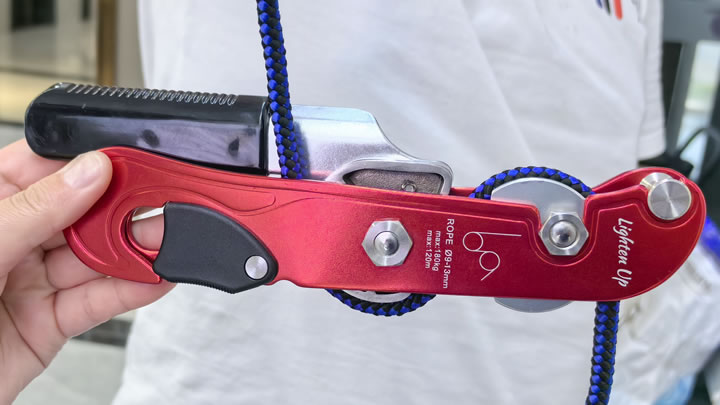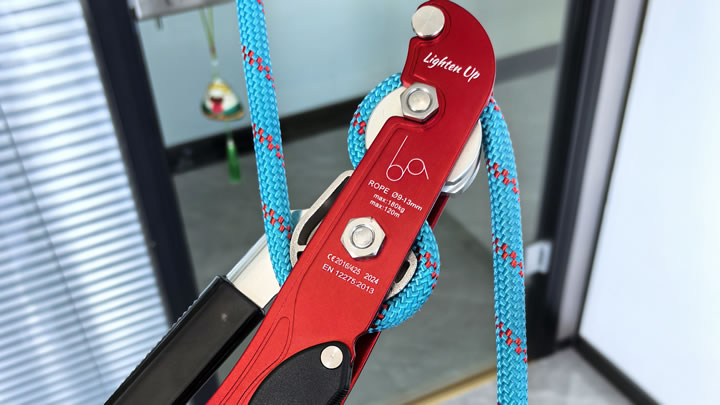Climbing Descent STOP vs. Traditional Belay Device: Understanding Critical Roles in Safety
"Mistaking a STOP for a belay device is like using an airbag instead of brakes – both save lives but address fundamentally different failures."
– UIAA Safety Commission
While both systems involve friction and ropes, they serve distinct purposes with life-or-death consequences when confused. Here’s the breakdown:

Core Functional Differences
| Parameter | Traditional Belay Device | Climbing Descent STOP |
|---|---|---|
| Primary Function | Control descent speed | Emergency free-fall arrest |
| Activation Mechanism | Manual brake hand input | Automatic upon hand release |
| Position on Rope | Below anchor point | ABOVE rappel device |
| Redundancy Role | Primary descent control | Backup system |
| Failure Consequence | Controlled slip | Catastrophic fall |
Physics & Mechanics Explained
Traditional Belay Device (ATC, Reverso, Figure 8):
- Creates continuous friction by bending rope through metal channels.
- Requires constant human input – removing brake hand = uncontrolled descent.
- Manages kinetic energy during normal operations.
Climbing Descent STOP (Prusik/Autoblock):
- Functions as a dead-man’s switch – engages only during failure.
- Relies on static friction: Hitch grips rope when loaded suddenly.
- Requires precise threading: Must be on weighted brake strand 6-18" above belay device.
⚠️ Critical Insight: A STOP cannot control descent speed – attempting to rappel solely on a friction hitch causes overheating, melting, and total failure.
Real-World Failure Scenarios
Case 1: Belay Device-Only Failure (Red Rocks, 2022)
- Climber’s ATC jammed with debris mid-rappel.
- No STOP installed → Panicked brake hand release → 20m ground fall.
- STOP Solution: Would have arrested fall at last anchor.
Case 2: Misused STOP as Primary Device (Alps, 2021)
- Climber used Autoblock without belay device to "simplify" setup.
- Friction hitch melted through after 15m descent → Rope severed.
- Solution: STOP must always supplement – never replace – belay devices.
When to Combine Systems: UIAA Protocol
- Multi-Pitch Rappels:Belay device: Primary descent controlSTOP: Attached to each intermediate anchor
- Overhanging/Icy Terrain:Add extra friction hitch wraps (5-6 for Autoblock)Use tubular device + STOP for redundancy
- Rescue Situations:Belay device lowers injured climberSTOP acts as progress-capture backup
Emerging Hybrid Tech: The Future?
New devices like the Petzl Rig and Edelrid Ohm integrate STOP-like functionality:
- Auto-blocking below specific angles
- Still require traditional braking below 90°
- Limitation: Cannot replace mid-rappel anchor backups
The Verdict: Non-Negotiable Synergy
| Situation | Belay Device | STOP | Outcome Risk |
|---|---|---|---|
| Routine Descent | ✓ | ✗ | Moderate |
| Complex/Overhanging Rappel | ✓ | ✓ | Low |
| STOP as Primary Device | ✗ | ✓ | Extreme |
| Belay Device Only + Failure | ✓ | ✗ | Critical |
Technical Consensus (AMGA/IFMGA):
"STOP systems reduce rappel fatalities by 89% when correctly paired with belay devices. Never deploy one without the other on vertical terrain."
Key Takeaways:
- Belay devices = controlled descent
- STOP systems = emergency fall arrest
- Fatal Error: Using STOP as primary brake
- Golden Rule: Always thread STOP ABOVE device on brake strand
Download the UIAA’s Rappel Redundancy Guidelines for certified setup diagrams.

